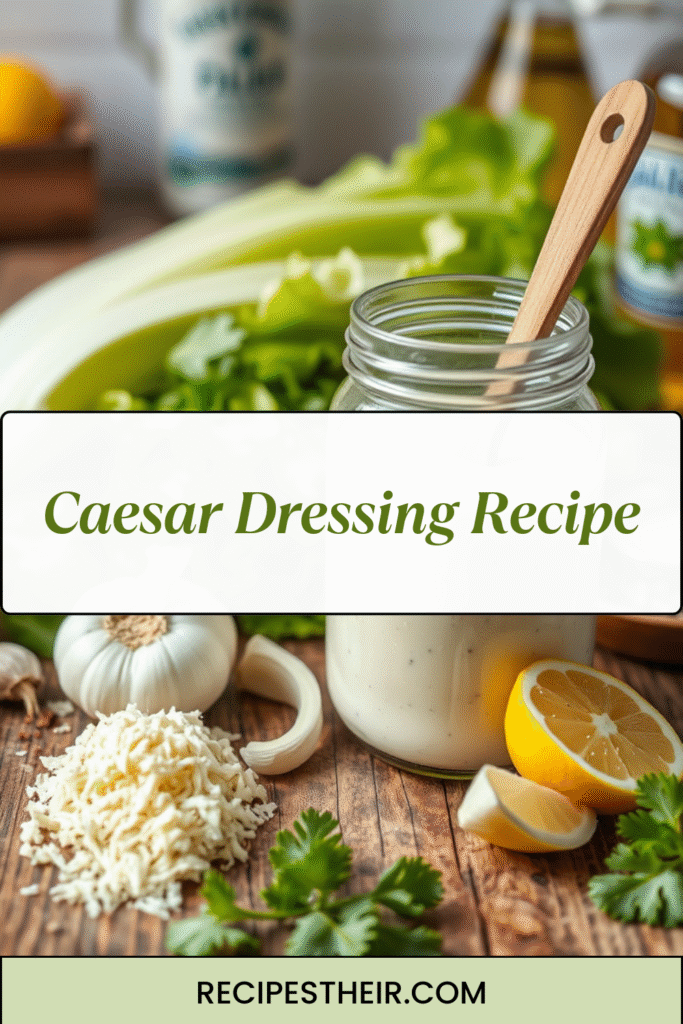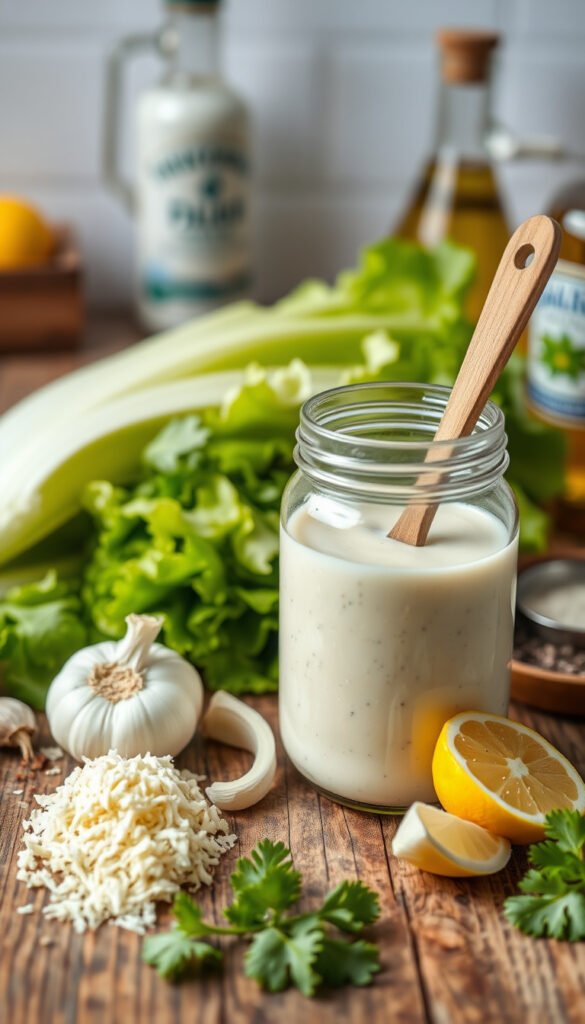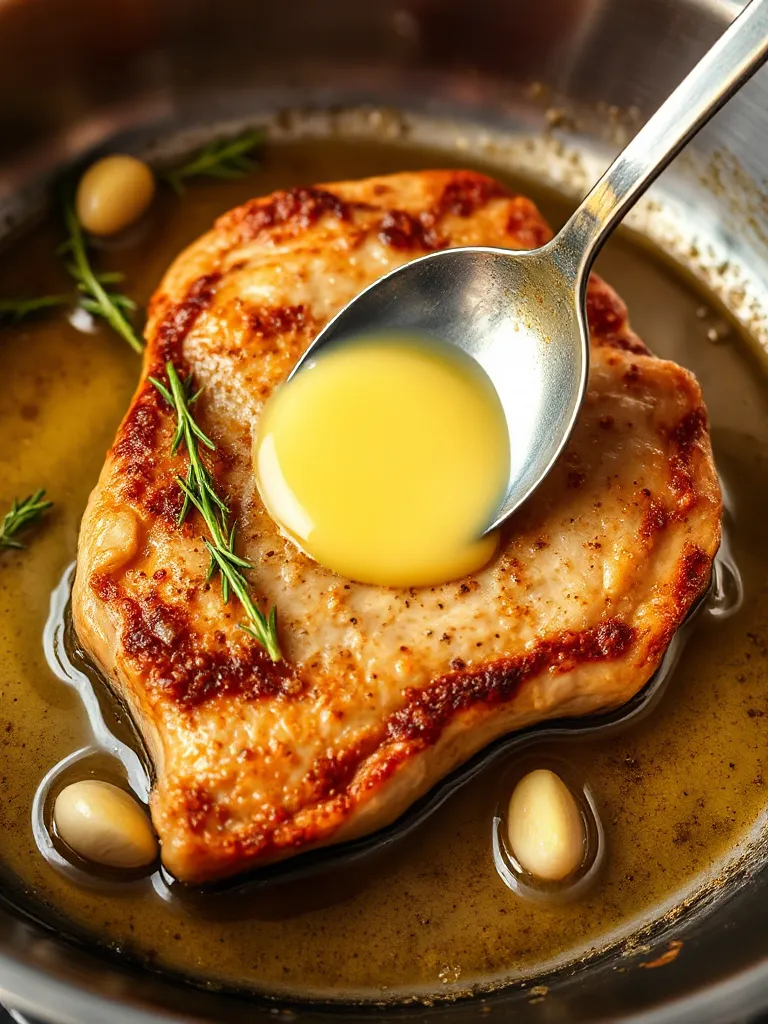Caesar Dressing Recipe: How to Make the Classic Creamy Caesar Dressing at Home
If you’re looking for the perfect Caesar dressing recipe, you’ve come to the right place. Creamy, tangy, and packed with flavor, this dressing transforms any salad into a restaurant-quality dish. Whether you’re topping a crisp romaine salad, drizzling over grilled chicken, or using as a dip, making Caesar dressing at home is easier than you think.

What Is Caesar Dressing?
Caesar dressing is a creamy salad dressing traditionally made with garlic, anchovies, Parmesan cheese, lemon juice, Dijon mustard, olive oil, and egg yolks. It originated in Tijuana, Mexico, in the 1920s, created by Italian-American chef Caesar Cardini. Over the years, it has become one of the most popular salad dressings worldwide.
Unlike bottled Caesar dressings, homemade versions have a richer flavor, smoother texture, and none of the unnecessary preservatives. By making it from scratch, you can also adjust the saltiness, tanginess, and creaminess to your taste.
Ingredients for Classic Caesar Dressing Recipe

Here’s what you’ll need to make authentic Caesar dressing:
Fresh Ingredients:
- 2 large egg yolks – adds richness and creaminess.
- 2 cloves garlic, minced – for that signature bite.
- 2 tablespoons fresh lemon juice – brightens the flavor.
- 2 teaspoons Dijon mustard – helps emulsify the dressing.
- 1 teaspoon Worcestershire sauce – adds depth and umami.
- 1/2 cup extra-virgin olive oil – for the base of the dressing.
- 1/4 cup grated Parmesan cheese – sharp and nutty flavor.
Optional Ingredients:
- Anchovy fillets (2–3) – authentic flavor, but you can skip for a vegetarian version.
- Salt and black pepper – to taste.
Tip: Use the freshest ingredients possible, especially eggs and lemon juice, for a bright, clean flavor.
Step-by-Step Caesar Dressing Recipe

Here’s a simple method to make creamy Caesar dressing at home.
Step 1: Prepare the Egg Yolks and Garlic
- In a medium bowl, whisk together the egg yolks and minced garlic until smooth.
- This forms the base of the dressing and ensures a creamy texture.
Step 2: Add Flavorings
- Mix in the lemon juice, Dijon mustard, and Worcestershire sauce.
- If using anchovies, finely mash them with a fork before adding.
- Whisk until well combined.
Step 3: Emulsify with Olive Oil
- Slowly drizzle in the olive oil while whisking continuously.
- Whisking slowly allows the dressing to emulsify, creating a thick, creamy consistency.
- Continue until all the oil is incorporated.
Step 4: Add Cheese and Season
- Stir in the Parmesan cheese.
- Season with salt and freshly ground black pepper to taste.
- Taste and adjust lemon juice or mustard if needed.
Step 5: Serve or Store
- Serve immediately over crisp romaine lettuce, croutons, or grilled vegetables.
- Store leftover dressing in an airtight container in the fridge for up to 3–4 days.
Tips for the Perfect Caesar Dressing
- Use Fresh Ingredients – Fresh garlic, lemon, and Parmesan make all the difference.
- Control the Creaminess – Adjust the olive oil quantity to get your preferred texture.
- Avoid a Bitter Taste – If the dressing tastes slightly bitter, it may be due to over-whisked olive oil. Use light-tasting olive oil or a blend with vegetable oil.
- Anchovy Substitute – If you don’t like anchovies, a teaspoon of capers or soy sauce can mimic the umami flavor.
- Make It Eggless – For a safer version, you can substitute the egg yolks with Greek yogurt or mayonnaise.
Variations of Caesar Dressing
Homemade Caesar dressing is versatile. Here are some variations:
1. Creamy Caesar Dressing Without Anchovies
Skip anchovies for a vegetarian-friendly version. Add extra Parmesan and a touch of capers to maintain that umami flavor.
2. Spicy Caesar Dressing
Add 1/4 teaspoon cayenne pepper or a few drops of hot sauce to the dressing for a spicy kick.
3. Vegan Caesar Dressing
Replace egg yolks with silken tofu or vegan mayonnaise, Parmesan with nutritional yeast, and skip Worcestershire sauce or use a vegan version.
4. Grilled Caesar Dressing
Add grilled garlic cloves for a smoky flavor. Perfect for summer salads and grilled vegetables.
How to Use Caesar Dressing
Caesar dressing isn’t just for salads! Here’s how to get creative:
- Classic Caesar Salad – Toss romaine lettuce, croutons, Parmesan, and dressing.
- Chicken Caesar Wraps – Spread on a tortilla, add grilled chicken and romaine for a quick meal.
- Caesar Dip – Serve with raw veggies or breadsticks as an appetizer.
- Pasta Salad – Toss cold pasta, veggies, and dressing for a creamy pasta salad.
- Roasted Vegetables – Drizzle over roasted veggies for extra flavor.
Common Mistakes When Making Caesar Dressing
- Not emulsifying properly – Slowly add oil while whisking for a creamy texture.
- Using pre-grated cheese – Freshly grated Parmesan melts better and tastes fresher.
- Overpowering garlic – One to two cloves are enough; too much can dominate the flavor.
- Not balancing acidity – Adjust lemon juice carefully to avoid overly sour dressing.
Nutritional Information
A typical serving (2 tablespoons) of classic Caesar dressing contains:
- Calories: 150–180
- Fat: 16g
- Carbohydrates: 1g
- Protein: 2g
- Sodium: 200–300mg
Note: Nutritional values may vary depending on the amount of cheese and oil used.
FAQs About Caesar Dressing
Q1: Can I make Caesar dressing ahead of time?
Yes! Store in the fridge for up to 4 days. Whisk before serving, as the oil may separate.
Q2: Can I use bottled Caesar dressing instead of making it?
You can, but homemade dressing tastes fresher and can be adjusted to your liking.
Q3: Is it safe to use raw egg yolks?
Yes, but use pasteurized eggs to reduce the risk of salmonella.
Q4: How can I thicken Caesar dressing?
Add more Parmesan or whisk in a little mayonnaise to thicken.
Why Homemade Caesar Dressing Is Better
- Customizable Flavor – Control the garlic, lemon, and anchovy intensity.
- No Preservatives – Free from stabilizers, sugar, or artificial flavors found in store-bought dressings.
- Fresh Ingredients – Freshly grated Parmesan and olive oil enhance the taste.
- Versatility – Use it as a dressing, marinade, dip, or sauce.
Conclusion
In Conclusion, this Caesar dressing recipe is a game-changer for anyone who loves fresh, creamy, and flavorful salads. With just a few simple ingredients and a little whisking, you can make a restaurant-quality dressing at home. Whether you prefer classic, vegan, or spicy variations, this dressing elevates any dish.
So, next time you want a delicious, homemade Caesar salad, try this recipe and taste the difference of fresh, homemade dressing!




